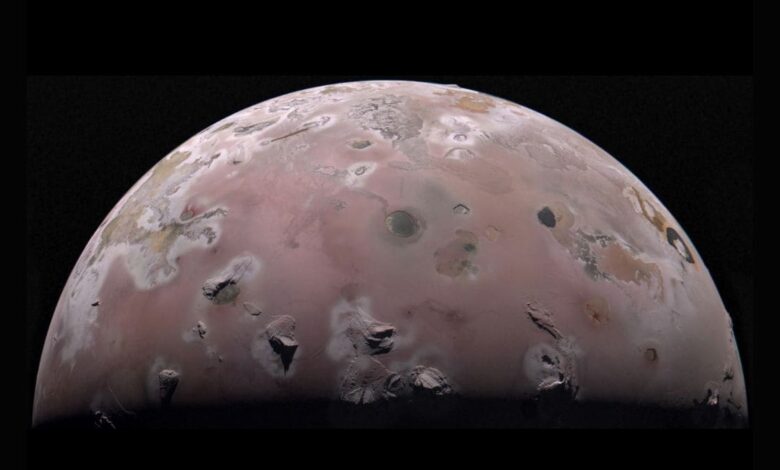NASA Rescues JunoCam: Deep-Space Heating Hack

NASA’s JunoCam Rescue: A Deep-Space Heating Miracle
NASA’s Juno spacecraft, orbiting Jupiter, faced a critical challenge when its JunoCam imager began to fail due to prolonged exposure to the planet’s intense radiation belts. Designed for only a few initial orbits, JunoCam remarkably endured 34 orbits. However, by the 47th orbit, radiation damage became apparent, rendering images nearly unreadable by the 56th orbit. Facing limited options and an approaching close flyby of Jupiter’s volcanic moon Io, engineers undertook a bold and innovative solution: an annealing process to revive the imager by carefully heating it.
The JunoCam Challenge: Radiation’s Toll
JunoCam, positioned outside Juno’s radiation-shielded interior, is particularly vulnerable. After numerous orbits, the camera exhibited signs of degradation, suspected to be caused by a failing voltage regulator. The mission team, located hundreds of millions of miles away, devised a last-ditch repair strategy: annealing. This technique involves subjecting materials to heat to repair microscopic defects, a process not fully understood but showing promise in laboratory settings. The goal was to heat the camera to 77°F (25°C) to realign its silicon-based components.
A Distant Fix with Promising Results
Initially, the efforts seemed futile. However, just days before the December 2023 flyby of Io, the camera unexpectedly recovered, restoring near-original image quality just in time to capture unprecedented views of Io’s volcanic landscapes. This remarkable recovery demonstrated the potential of annealing in space and provided valuable data during a crucial mission phase.
Radiation Lessons for Future Spacecraft
While JunoCam showed renewed degradation during Juno’s 74th orbit, the successful restoration has spurred broader applications. The team has since applied similar annealing strategies to other Juno instruments, enhancing their resilience to harsh conditions. Juno’s findings are now influencing spacecraft design across the board.
Implications for Spacecraft Design and Beyond
According to Juno’s principal investigator, Scott Bolton, the mission is providing insights into building radiation-tolerant systems that benefit both defense and commercial satellites. These findings will inform future missions to outer planets or those operating in high-radiation environments near Earth, such as the Van Allen belts. Juno’s mission continues to yield unexpected innovations, highlighting the transformative potential of targeted heating techniques.
Annealing: A Table of Applications
| Application | Description | Benefit |
|---|---|---|
| JunoCam Restoration | Heating the camera to repair radiation damage | Restored image quality and extended mission life |
| Instrument Hardening | Applying annealing to other Juno instruments | Increased resilience to harsh conditions |
| Future Spacecraft Design | Incorporating radiation-tolerant systems | Enhanced performance and longevity in high-radiation environments |
The Future of Space Exploration: A Hot Topic
Juno’s experience with annealing represents a significant step forward in our ability to maintain and extend the lifespan of spacecraft operating in extreme environments. This innovative approach provides a valuable tool for future missions, enabling us to explore the solar system and beyond with greater confidence and resilience.
Additional Considerations:
- Material Selection: Choosing materials less susceptible to radiation damage.
- Shielding Techniques: Implementing advanced shielding to protect sensitive components.
- Redundancy Systems: Building in backup systems to mitigate potential failures.
- Software Solutions: Developing algorithms to correct for image distortion caused by radiation.
By combining these strategies, we can ensure the continued success of space exploration missions in even the most challenging environments.




